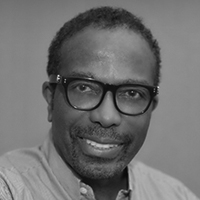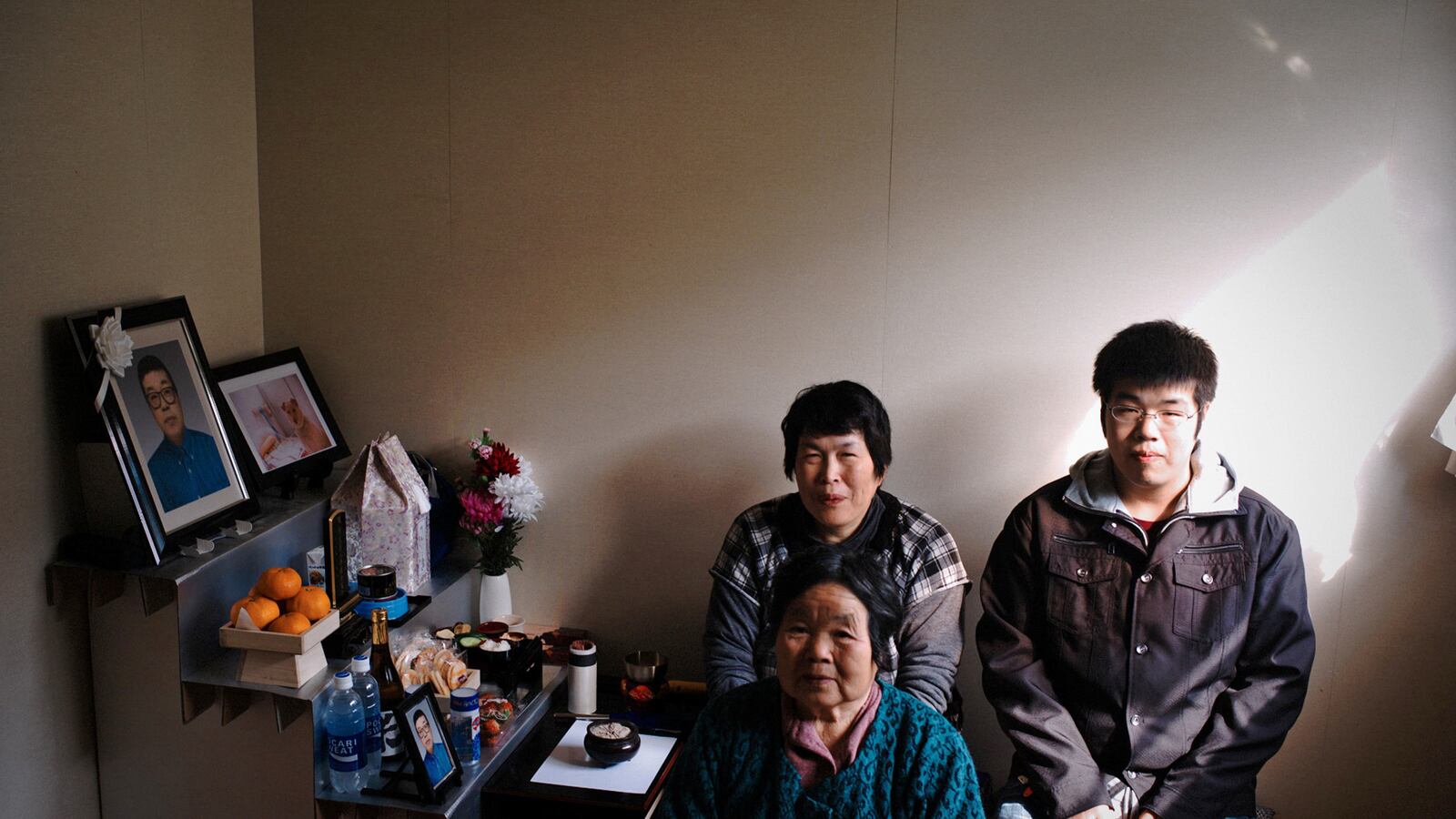
The rice fields along Prefectural Road Route 12 leading to Fukushima Daiichi nuclear power plant are brown and hard. Trucks and SUVs drive past Usuishi Elementary School—perched silently on a hillside, bereft of the reassuring sound of children’s voices. Wild monkeys cavort next to a small cemetery filled with gray gravestones. Houses, some grand, others ramshackle, sit empty, cars in driveways. Farther up the road, amid picturesque vistas, solitary figures occasionally dot the landscape in towns like Iitate, once famous for its beef—typically, longtime residents too old or set in their ways to care much about any radiation risks. Then suddenly, in Haramachi town, we see kids in blue uniforms and white helmets riding their bicycles from school, and student drivers nervously negotiating a winding Prefectural Road Route 34.
In the aftermath of the earthquake, tsunami, and nuclear disaster that struck Japan in March 2011 and killed about 16,000 people, this medley of ghost towns and populated oases in the northeast captures the imbalance, red tape, and confusion that afflict the region—and the nation—two years on. The government says the plant is “stable.” That water is keeping the reactors cool. That the plant no longer emits significant amounts of radiation. That authorities are “doing our best” to decontaminate the area, shut down the plant, and return lives to normal. There’s no way to really determine how much of that is true—we got within nine miles of the plant before barriers blocked our path. For now, some 2,700 people are still listed as missing. And about 160,000 can’t go back their homes, many stuck in “temporary” housing—with no end in sight, and scant information from the government or Tokyo Electric Power Co. (TEPCO), the utility that operates Fukushima Daiichi.
“Nobody—not the government, the prefecture, the town—tells us whether we can go back and live there again or not,” says Mayumi Monma, 48, who was evacuated in 2011 from the Tsushima area of Namie, in Futaba County, about 20 kilometers from the plant. “That is all so frustrating; we cannot plan anything for the future. If they think we cannot go back or it’s impossible to live in such a contaminated area, it would be kind to say so. It would be shocking, but at least we can move on.”
She says this in the cramped living room of the unit she shares with her 83-year-old mother-in-law at a temporary-housing project in Kori, home to 410 evacuees, 220 of them over 65. A shrine takes up a big chunk of the room—dedicated to her husband, Isao, who died of liver failure last December, apparently after the strain and depression of being uprooted drove him to seek refuge in alcohol. “After we came here, he started to drink heavily, because the life here was too stressful,” the widow says. “At home we were surrounded by nature, but all we see here is asphalt.”
Like a growing number of evacuees, plant workers, and ordinary citizens, Monma increasingly distrusts officialdom. Many Japanese say authorities have been incompetent and disorganized, and that they appear to be making it up as they go along—while keeping citizens in the dark.
“As a reconstruction worker, I don’t trust TEPCO and the government,” says Makato Inada. Two years ago he was working at Fukushima Daini, a nuclear plant close to the stricken Daiichi. He agreed to help out at Daiichi, expecting to merely transport materials by car between the two facilities. Instead he worked inside two reactor buildings. Now he lives in temporary housing in Minamisoma with his elderly parents—while his wife and son live far away in Nihonmatsu.
“When I was doing decontamination work, I compared the radiation level on the monitoring post with what was on the dosimeter I always carry,” he says. “It was far lower. I told TEPCO staff, and they said that post was running out of battery. But nobody was buying that.” (A story in Mainichi newspaper last November reported the government’s Nuclear Emergency Response Headquarters as saying all portable monitoring posts—675 in all—displayed air-dose levels 10 percent lower than the actual amount.)
“We have been fooled by the government and TEPCO all the time,” Inada says. “They don’t release important information, and there’s not adequate treatment for plant workers, to name a few. We don’t trust them. Nothing has changed in our minds. Even an elementary-school kid knows TEPCO always lies.”
Ironically, Inada, who is 42, says he’s making more money now before the catastrophe. That’s because TEPCO, which has said it expects to spend $38 billion on claims, metes out compensation with something approaching abandon. He says his payments include 100,000 yen a month for “mental damage.” But even the compensation scheme, he says, is a parable for the dysfunction of the rebuilding effort. “I see many people going lazy, because now they don’t have to work because of the compensation money. Some of them go gambling every day. Since the end of last year I see many new cars in my temporary housing. I heard the car dealers around this area are doing very well.”

Dairy farmers Toshinori Sanpei, 57, and Keiko Sanpei, 55, relate similar stories. The March 11 disaster chased the couple and Keiko’s brother Tsuyoshi Konno, 52, from their dairy farm in Tsushima, in Namie, and they are now pursuing the business on a rented property in Motomiya. Keiko says she’s frustrated by the compensation program, because while the company makes up the gap between what the family take in now and what they used to make, expenses such as hay for their 60 cows have gone up, and the family cannot improve performance. At the same time, she says, “I know many who get compensation and get lazy. In that sense TEPCO is just giving away money and spoiling the victims.”
For its part, the utility is remarkably sanguine about compensation. “To be honest, we don’t mind how they use the money,” says a press officer who would not be identified by name. “It is not our business.” A colleague of his tells Newsweek, “In reality we don’t know when we stop paying the money ... But we cannot keep paying forever.”
That’s what scares evacuees, many of whom not only can’t go back home, but are unable to resume their jobs in areas authorities have placed off limits because of possible contamination.
“It’s a lack of accountability,” says Dr. Kiyoshi Kurokawa, the high-powered nephrologist who chaired the Fukushima Nuclear Accident Independent Investigation, whose report last July stunned the country with its scathing conclusion that while the quake and tsunami were natural occurrences, the reactor meltdown “was a disaster ‘Made in Japan.’ Its fundamental causes are to be found in the ingrained conventions of Japanese culture: our reflexive obedience, our reluctance to question authority, our devotion to ‘sticking with the program,’ our groupism, and our insularity.”
“People want answers,” Kurokawa says in an interview. “You should give people some options—and you have to be clear whatever the options are. If they can go back to their homes or move somewhere else, or what. People need direction.
“But no one wants to take responsibility,” adds Kurokawa, who says he does not believe authorities have responded adequately to the report’s findings and recommendations. “It’s bureaucracy; it’s seniority-based, single-track careers for the elite. Same thing in TEPCO; they are risk-averse. Nobody will take a decision. It’s groupthink, and groupthink can kill.”
It certainly is killing the faith many have in the Japanese government, which isn’t even sure how long evacuees will be housed in the temporary quarters which—even with their prefab construction and thin walls that force occupants to speak quietly—are at least shelter.
Officials retreat to bureaucratic jargon when asked about the housing.
Kazuhiro Sasaki, an official in Fukushima prefecture’s civil engineering division: “We operate according to the Disaster Relief Act. It says emergency measures are in effect only two years. But this year the government extended it for one more year. An official in the central government’s Ministry of Health, Labor, and Welfare: “We are still trying to figure out what the evacuees in temporary housing want to do in the future, and doing surveys.”
A TEPCO press release last week talks up “the way forward” with references to “accelerated” revitalization, reaffirming the area’s “economic potential,” and continuing to “expedite progress in reconstruction.”
Utility general manager Akira Kawano, however, told the NHK TV network that decommissioning the nuclear plant could take 40 years, and that TEPCO engineers need to figure out reactor pressure, how to properly remove molten fuel, and how to treat and safely store liquid and solid waste, and that they “hope to understand something about it within a couple of years.”
Two months ago, the Liberal Democratic Party roared back to power, winning a national election and placing Shinzo Abe in the prime minister’s office for a second stint. He has since made some strong moves to boost the nation’s sagging economy, taking on Japan’s banks and powerful farmers.
But Makoto Inada scoffs when asked if he expects more responsiveness on Fukushima from the new P.M., whose aggressive economic approach has been dubbed Abenomics.
“These people say good things before the election, and once elected they do nothing,” Inada says. It appears he has the measure of politicians everywhere.
—with reporting from Toshihiro Yamada






